
CPL.
THOMAS H.C. BRIGGS
Born on July 8, 1947
From SANTA BARBARA, CALIFORNIA
Casualty was on Feb. 8, 1968
in THUA THIEN, SOUTH VIETNAM
Panel 38E - - Line 21
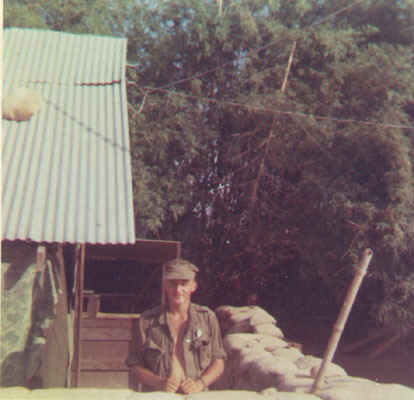
Tom
Briggs
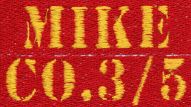
Cpl.
Thomas H. C. Briggs served with the 3rd Battalion, 5th Marines,
Mike Company. He was Killed In Action during the TET Offensive, 1968.
His name stands proudly on the Mike 3/5 Wall of Honor.
Semper fi, Brother Marine.
(See
also TET 1968. M Co. 3/5)
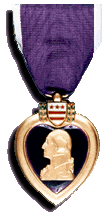
(Click
images to enlarge)
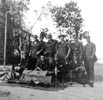
Tom
Briggs is in the front (kneeling, center)
(picture
courtesy of Tom Hoying)
Front:
Forrest Bartram, Tom Briggs, Frank Ambrose, Bob Montgomery
Back: Unknown, Richard Hipp, Unknown, Brad Reynolds, Tom Hoying,
Ken Fields, Unknown
(If anyone recognizes the Unidentified Marines, please let us
know)

Tom
Briggs (left) and unidentified Marine
(picture courtesy of Tom Hoying)
***********************************
"Briggs
was a good Marine, and a good friend. I miss him still."
Semper Fi, Brad Reynolds


Left
picture: Briggs is second man to the left
Right picture: Briggs is in the background listening to a radio
(pictures courtesy of Brad Reynolds)

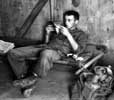
Left
picture: Tom Briggs and M/3/5 Marines
Right picture: Tom Briggs
(pictures courtesy of Dennis Heon, M/3/5)
******************************
My
sister's sweetheart
Tommy,
You were my sister Linda's love, and our family's hero. We will never
forget you.~Jeremy Lape

Tom Briggs
*****************



Tom Chisholm
Briggs
(picture courtesy of C. Porter)
My
Friend and Schoolmate
Tom
Chisholm Briggs was the only son of Harold and Dorothy Briggs of Santa
Barbara, California, immigrants from Edinburgh, Scotland. His maternal
grandmother lived with them, and was always referred to as "Mrs.
Chisholm." His father was an electrical contractor. Tom had no
other relatives that I know of, either in Scotland or America. I knew
Tom for 3 years at Dunn School, Los Olivos, California; the headmaster
was an Oxford Latin and Greek graduate named Anthony B. Dunn, who
died shortly after we graduated. The school is still in existence.
I edited the school newspaper.
Tom graduated in 1965. I knew Tom fairly well because there were
only 80 boys in the whole school. Tom had a girlfriend named Linda
who was in love with him, but he did not marry her. I only met her
once. I became fairly close to his parents, especially his mother,
after he was killed, and last visited them with my wife in 1974. We
used to talk about Scotland and Scots history. She never got over
Tom's death; Tom's father finally asked me to stop contacting them
because she got too depressed after my visits. She said she wouldn't
have minded his death so much if he'd lived a little while longer
and had had a family.
I was very fond of Tom, but then so was everybody else; everybody
liked him. He never wrote to me after leaving school; I never even
knew he was in the Marines until I saw the notice of his death by
accident in the Los Angeles Times. His father told me he was hit in
the head by shrapnel and killed instantly; that was during the TET
Offensive. Of course the American newspapers forgot to tell us that
the Viet Cong and their North Vietnamese regular pals were almost
totally wiped out; they described it as a great American defeat.
Tom
had one remarkable physical feature: the color of his eyes. His mother's
eyes were a very dark blue; his father's eyes were a sort of olive-green.
On a form, you'd say Tom's eyes were grey or hazel, but really it
was almost impossible to say what color his eyes were, because they
kept changing -- from grey to blue, to green, to brown, sometimes
three or four colors at once, alternating and blending into each other
with the light and the movement of the sun and clouds -- just like
the movement of the sun and rain and clouds over the hills and lakes
and heather of Scotland; I've been to Scotland. Tom's eyes were an
entirely different color inside the classroom, or in the evening,
or at night, from what they were outside, or on a bright or cloudy
day. I have never met anyone with eyes like that; he was like a chameleon.
In
all the years I knew him, I never knew Tom to do or say one single
hurtful or small-minded thing; he would never tease another boy or
doing anything to hurt anyone. He was a person entirely without spite
or malice. He loved to laugh, and loved a good joke (usually a prank
of a practical nature, but never anything malicious). He was very
relaxed and smiling -- he had a very relaxed smile which was characteristic
of him -- so of course everybody liked him. Most people (especially
people who have never done military service) imagine professional
soldiers or Marines as over-athletic, belligerent, argumentative,
dominating, hard drinking, etc. Tom was none of those things. It's
still very hard for me to imagine him as a Marine; he was good at
sports, and I can certainly imagine him as a very brave soldier, but
more or less as a draftee, like most other people.
Soldiering must have been in his blood: the Scots have been a nation
of soldiers and fighters for thousands of years. His grandfather was
in the Scots Guards, an elite infantry unit in the British army; his
father was in a commando unit in France during WWII. Tom had a full
Scots kilt, with the three daggers, the whole rig-out, which he brought
to school and sometimes wore to chapel instead of a suit. They are
still common in Scotland. Tom was a real Scot, worthy of his Scots
ancestors; I'll never forget him, and I don't think anyone else will
either.~C.P.
****************************
Dunn
School Friends Remember
Tommy's
story is very important to our school. We were all kind of in
the eye of the storm in those days, and most of my classmates were
most concerned with avoiding the draft rather than in furthering their
education. So everyone was very intent on getting into college.
Tommy--and I as well--were mediocre students. I believe that
he got accepted to Menlo, but he wasn't into it any more than I was
in trying to continue my education.
I
got drafted in spring of '66. Since I didn't have any plans
in particular, I figured "what the hell" and went off to
the induction center. I got assigned to the MPs and spent the
next two years guarding prisoners at the Fort Riley Stockade.
Out of the 248 guys in my basic training company, only two were assigned
to combat arms and went to VN. Both were married. So the
luck of the draw is sometimes a cruel thing.
Tommy was going to be drafted. But he felt that rather than
be a pawn in someone's lottery, he would enlist in the Marines.
As noted by Carlos, Tommy was a Scot. (I am not sure that Tommy
was even an American citizen.) His family had a proud military heritage.
I don't know whether that had a part in his decision. I know
it did in my acceptance of being drafted. My dad was a colonel
in the reserves--26 years' worth. I think that I wanted to have
some war stories to tell him for a change.
I
learned about Tommy's death through my parents while I was at Fort
Riley. This came within months of the news that another friend,
who I had known since Kindergarten, had also died in the service,
though not in combat. At that time, I didn't know that Tommy
was even in the service.
During my visits to Dunn School for alumni gatherings, there was a
lot of speculation about Tommy's service. I heard people say
that he was a tunnel rat, that he had been wounded, sent home, and
returned to Vietnam. Nobody seemed to know the truth.
I think that, because of our memories of Tommy, everyone expected
an especially heroic service history.
I
finally found out some facts by finding a veteran's bulletin board
on the Web. A gentleman emailed me and told me where Tommy had
died and the circumstances. From what I understand, Tommy was
only in-country for a short time before the shit storm of Tet started,
and that his death came only about a week after the start of the North's
offensive. Whatever the circumstances, Tommy is a hero in our
eyes, as are all those who served. I believe that it is especially
important to the young people at Dunn School to understand the importance
of those days and those who sacrificed so much...and are still sacrificing.~Dick
McKee
